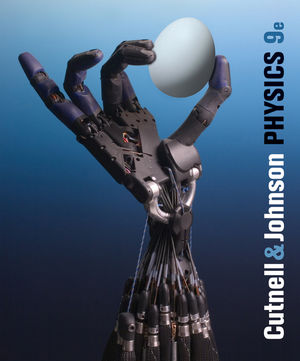 Phys
202 General Physics II
Spring 2014
Phys
202 General Physics II
Spring 2014
Text Book: Physiscs 9th Edition (Wiley, 2012)
Phys 202 meets in Sims 209 Tuesday and Thursdays 12:30-1:45 PM
Professor: Dr. Mesgun Sebhatu, Sims 203. Office hrs: 1:00-2:00 PM Wednesdays and 11-12 Thursdays . Available at other times by appointment
Brief description of the course and some advice: The PHYS 201-202 sequence covers the major branches of classical physics: PHYS 201 deals with mostly mechanics while PHYS 202 covers thermodynamics, electromagnetism, and optics. The course emphasizes understanding of fundamental physics concepts and principles as well as the development of conceptual and analytical problem solving skills by using physics concepts, principles and mathematics in the solution of various interesting and challenging real world problems. This course should also help you review and master your algebra, trigonometry, and enable you to appreciate your calculus by putting it to work in physics. In this course, rote memorization is discouraged. Formulas and constants will be provided even during a test. Use of calculators is encouraged. In fact, it would be difficult to survive the course without a good scientific calculator and the skill needed to use it to solve problems. PHYS 201-202 is primarily intended for students in the life and health sciences. PHYS 201 is the first semester of a one-year general physics (PHYS 201-202) course that utilizes algebra and trigonometry. PHYS201 and 202 have the lab components PHYS 201L and 202L respectively. One must take PHYS 201 and 201L concurrently to get the 4-hour credit for PHYS 201.
PHYS201 and 202 have the lab components PHYS 201L and 202L respectively. One must take PHYS 201 and 201L concurrently to get the 4-hour credit for PHYS 201.
The major objectives and expected outcomes of PHYS 201-202 are:
· Develop an understanding of basic concepts and principles in physics that are the foundation for all science and technology
· Develop conceptual and analytical problem solving skills that are indispensable for any professional in the life and health sciences
· Develop an understanding of the role physics plays in everyday life and in technology
· Develop the ability to express scientific ideas clearly and concisely both quantitatively and in words
In the labs (Phys 201L-202L) the major objective is for students to practice the scientific method hands on.
Given a purpose, they test a hypothesis or a principle of physics. They are expected to learn how:
· To perform a series of experiments and acquire sets of data using a computer and/or direct observation every week for three hours.
· To statically analyze their data using a spreadsheet or other software for calculations and curve fitting.
· To compare their experimental values with expected values and calculate % errors.
· To arrive at a conclusion that relates to a hypothesis (or purpose) and writes a concise and clear conclusion.
· To learn how collaborate. i.e., suggest ideas, agree and disagree with their peers and even their instructor.
You will use WileyPlus to practice as well to submit homework that will be graded.
(Please click on the link <WileyPlus>and register immediately)
Study Tips for Introductory Physics Students
Tentative Course Outline and Test Schedule
The course is divided into four convenient parts (I to IV). For each part, detailed study guides will be available on this website prior to each test. The study guides will be updated as needed from time to time. Please revisit the course website to have a current study guide and test date. Changes in the tentative schedule will be announced in class or via e-mail at least a day in advance